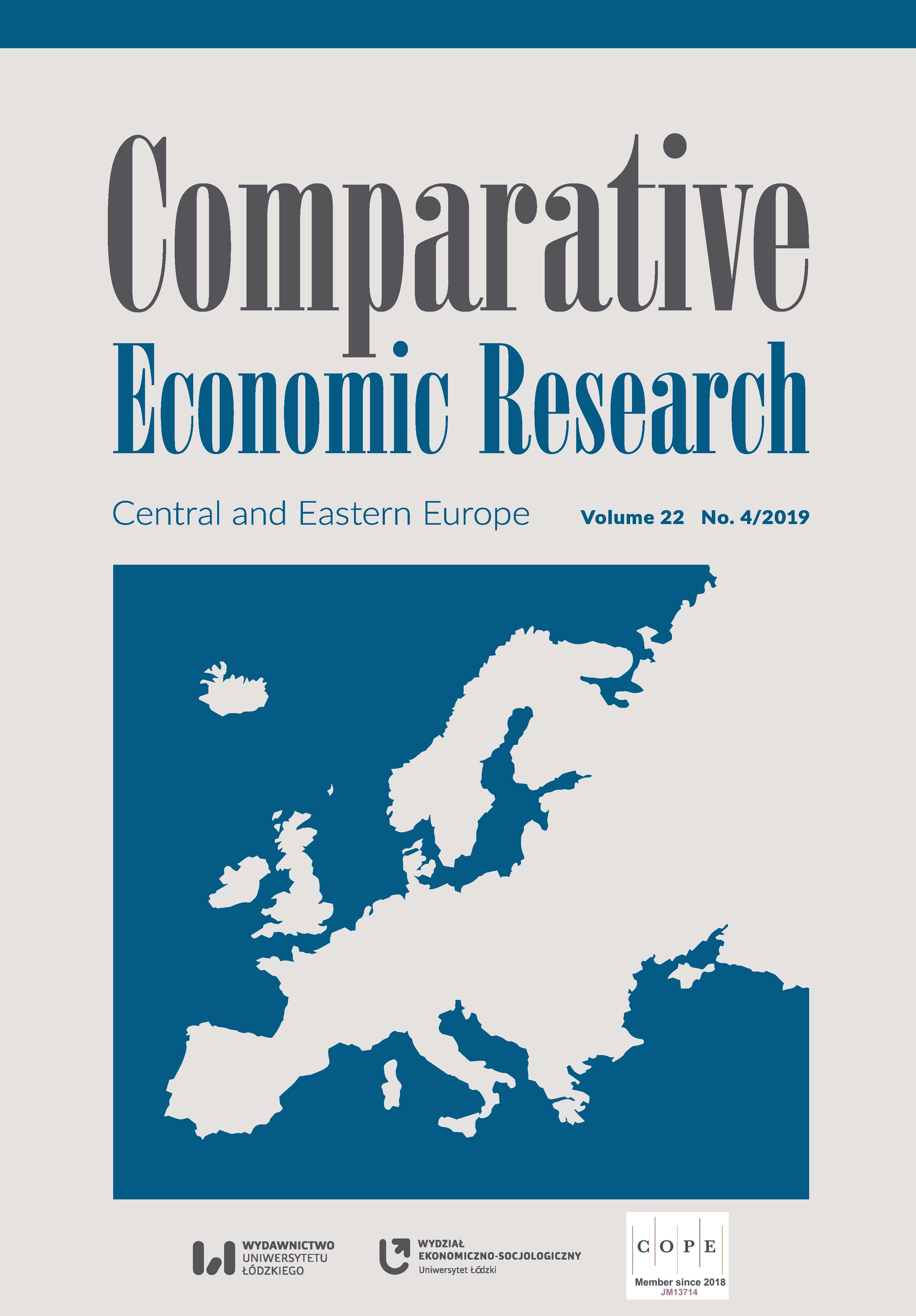The Role of China’s Exchange Rate on the Trade Balance of Sub‑Saharan Africa: a Gravity Model Approach
DOI:
https://doi.org/10.2478/cer-2019-0032Keywords:
bilateral trade, China, SSAAbstract
This study seeks to investigate theimpactof China’sexchange rate onthe trade balance of 41 Sub‑aharan African countries for the period from 1994 to 2016. Using an augmented gravity model, the grouped and ungrouped results of the study confirm the elasticity and absorption approaches of the trade balance. Similarly, the robustness check, by dividing the sample period into two sub‑eriods (2005–016 and 1994–004), also confirms the elasticity and absorption approaches of the trade balance.
Downloads
References
Anderson, J.E. and Van Wincoop, E. (2003). Gravity with Gravitas: A Solution to the Border Puzzle, “American Economic Review”, 93 (1), pp. 170–192. Doi: 10.1257/000282803321455214
Google Scholar
Bahmani‑Oskooee, M. (1991), Is there a long‑run relations between the trade balance and the real effective exchange rate of LDCs?, “Economics Letters”, 36 (4), pp. 403–407. Doi: 10.1016/0165-1765(91)90206-Z
Google Scholar
Bahmani‑Oskooee, M. (2001), Nominal and real effective exchange rates of middle eastern countries and their trade performance, “Applied Economics”, 33 (1), pp. 103–111. Doi: 10.1080/00036840122490
Google Scholar
Gylfason, T. and Risager, O. (1984), Does devaluation improve the currentaccount?, “European Economic Review”, 25 (1), 37–64. Doi: 10.1016/0014–2921 (84)90070–9
Google Scholar
Hausman, J.A. (1978), Specification Tests in Econometrics, “Econometrica”, 46 (6), 1251. Doi: 10.2307/1913827
Google Scholar
Junz, H. and R.R. Rhomberg (1973), Pric ecompetitiveness in export trade among industrial countries, “American Economic Review, Papers and Proceedings”, 63, pp. 412–418.
Google Scholar
Krueger, A.O. (1983), Exchange Rate Determination, Cambridge University Press, Cambridge.
Google Scholar
Linder, S.B. (1961), An Essay on Trade and Transformation, Stockholm: Almqvist and Wiksell.
Google Scholar
Linneman, H. (1966), An Econometric Study of International Trade Flows, Amsterdam: North Holland.
Google Scholar
Marquez, J. (1990), Bilateral trade elasticities, “Review of Economics and Statistics”, 72, pp. 70–77.
Google Scholar
Miles, M.A. (1979), The effects of devaluation on the trade balance and the balance of payment:somenewresults, “Journal of Political Economy”, 87, pp. 600–620.
Google Scholar
Poyhonen, P. (1963), Toward A General Theory of International Trade, Ekonomiska Samfundets Tidskrift, Tredjeserien, 16, pp. 69–77.
Google Scholar
Tinbergen, J. (1962), Shaping the world economy: Suggestions for an international economic policy. New York: Twentieth Century Fund.
Google Scholar
Williamson, J. (1983), The Open Economy and the World Economy, Basic Books, New York.
Google Scholar
World Bank Group 2015. Global Economic Prospects, June 2015: The Global Economy in Transition. Washington, DC: World Bank. Doi: 10.1596/978–1–4648–0483–0. License: Creative Commons Attribution CC BY 3.0 IGO.
Google Scholar
Downloads
Published
How to Cite
Issue
Section
License

This work is licensed under a Creative Commons Attribution-NonCommercial-NoDerivatives 4.0 International License.











